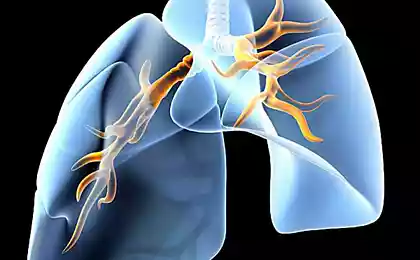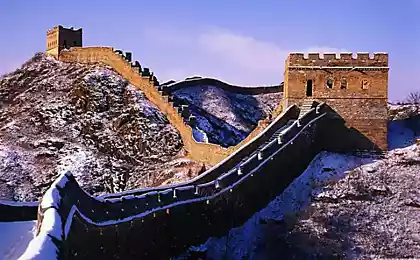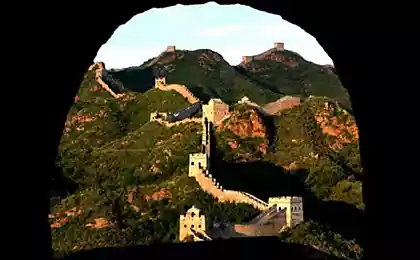1458
Walk on the Wall of China
We invite you to walk on the Great Wall of China, to see her greatness from different angles and see that not all parts of it as beautiful as we usually see in the photographs.

That looks like this part of the front:

And this is not the front. These walls are the remains of Jiayuguan - urban district in Gansu Province of China. Photo taken on Oct. 11, 2005. (Photo by Greg Baker | AP):

The remains of the fortress of the 14th century in Jiayuguan, 15 September 2009. (Photo by Sigismund von Dobschutz):

This is also part of the Great Wall in the urban district Tszyayuyguan built during the Ming Dynasty (1372) Photo 2003. (Photo Goh Chai Hin | AFP | Getty Images):
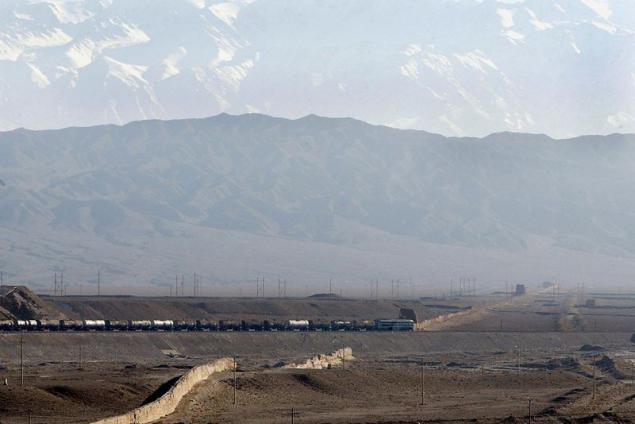
The western edge of the Great Wall near the district Tszyayuyguan, May 30, 2007. (Photo by Michael Goodine):

Time spares no one and nothing. These hills are actually the remains of walls are also in the urban district of Yinchuan, China. (Photo by Kim Siefert):

From this part of the Great Wall in the urban district Tszyayuyguan, built in the 16th century, almost nothing left, but it was rebuilt in 1987. (Photo by Greg Baker | AP):

We are located 180 km north of Beijing. Unlike most of the other sites around the capital, restored for tourism, this part of the Wall, referring to the days of the Ming Dynasty (around 1368), it has been left in its original form. May 24, 2006. (Photo by Frederic J. Brown | AFP | Getty Images):

Section of the wall to the west of the city district of Yinchuan, 25 June 2007. (Photo by Frederic J. Brown | AFP | Getty Images):

This photograph was taken in 1998 in the mountains Inshan. 200-kilometer section of the Great Wall, built during the Qin Dynasty (221-207 BC), was discovered by archaeologists in (Photo Wang Yebiao, Xinhua | AP):

The old part of the city walls in Longkou County (Shandong Province). (Photo by Kim Siefert):

Wall north-east of Beijing, December 29, 1999. This part also did not spare the time. (Photo by Greg Baker | AP):

And this is a "tourist" part of the Great Wall of China near Beijing. (Photo by Saad Akhtar):

Section of the wall on the outskirts of Beijing called "Badaling", June 1, 2010. (Photo by Liu Jin | AFP | Getty Images):
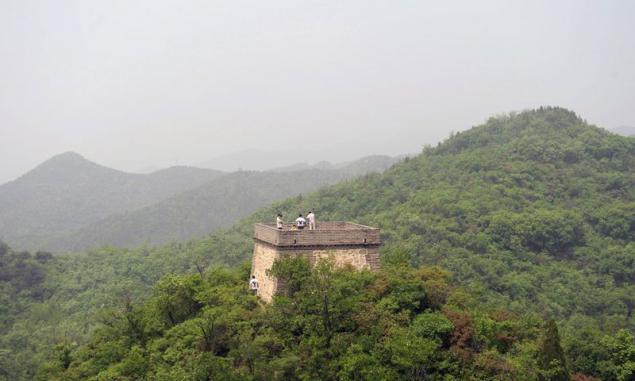
Department of Culture of China periodically makes measurements of the Great Wall of China, March 14, 2006. (Photo by China Photos | Getty Images):

Well-preserved part of the walls near the village Dongjiakou. (Photo by Kim Siefert):

Some sections of the Great Wall of China absorbed nature ... (Photo by Kim Siefert):

A relatively new Photo Wall in Hebei Province, July 17, 2012. (Photo by Ed Jones | AFP | Getty Images):

Some tourists are put directly on the wall of the tent. The plot "Badaling", September 24, 2010. (Photo by Frederic J. Brown | AFP | Getty Images):

Another section of the wall, merged with nature. 80 km from Beijing, 30 September 2012. (Photo by David Gray | Reuters):

Arch Former Watchtower September 30, 2012. (Photo by David Gray | Reuters):

Since the Wall goes through mountains, deserts and rivers, there are areas where it rises almost vertically. Hebei Province, July 17, 2012. (Photo by Ed Jones | AFP | Getty Images):

"Travel" section of the Great Wall of China is 80 km from the center of Beijing, May 7, 2011. (Photo by Jason Lee | Reuters):

Autumn scenery at the Great Wall of China. (Photo by Kim Siefert):

Old photo. This US President Richard Nixon standing on the Great Wall near Beijing, February 24, 1972. (Photo AP):

Wedding photo session, 18 October 2009. (Photo by David Gray | Reuters):

Section of the wall near Beijing. (Photo by Kim Siefert):
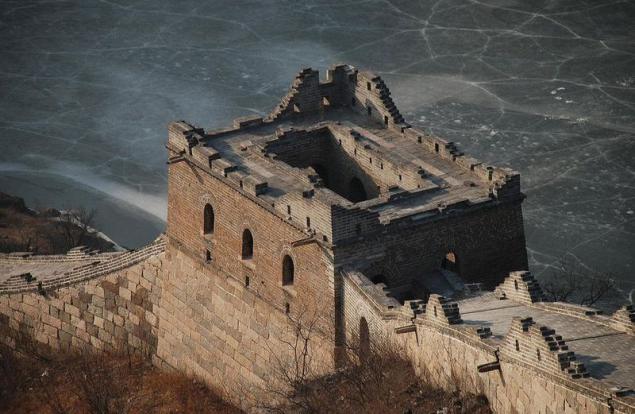
Section of the wall "Badaling" and the mountains, 24 September 2010. (Photo by Frederic J. Brown | AFP | Getty Images):

Merge with nature, Borough of Qinhuangdao. (Photo by Kim Siefert):

Near Beijing, July 8, 2007. (Photo by Ng Han Guan | AP):

The action in the watchtower on the occasion of the International Day Against Drug in Beijing, June 26, 2006. (Photo by China Photos | Getty Images):

Section of the Great Wall of China Symatay. In 1987 he was listed as a UNESCO World Heritage Site. (Photo by Bobby Yip | Reuters):

Hebei Province of China, 18 September 2011. (Photo by Alexander F. Yuan | AP):

We finish today's review of the interesting parts of the Great Wall of China with the title "head of the old dragon" of the Ming Dynasty (1368-1644). This is the place where the wall meets the sea. It is located in Hebei Province, July 9, 2009. (Photo by Andrew Wong | Getty Images):

Source: masterok.livejournal.com

That looks like this part of the front:

And this is not the front. These walls are the remains of Jiayuguan - urban district in Gansu Province of China. Photo taken on Oct. 11, 2005. (Photo by Greg Baker | AP):

The remains of the fortress of the 14th century in Jiayuguan, 15 September 2009. (Photo by Sigismund von Dobschutz):

This is also part of the Great Wall in the urban district Tszyayuyguan built during the Ming Dynasty (1372) Photo 2003. (Photo Goh Chai Hin | AFP | Getty Images):

The western edge of the Great Wall near the district Tszyayuyguan, May 30, 2007. (Photo by Michael Goodine):

Time spares no one and nothing. These hills are actually the remains of walls are also in the urban district of Yinchuan, China. (Photo by Kim Siefert):

From this part of the Great Wall in the urban district Tszyayuyguan, built in the 16th century, almost nothing left, but it was rebuilt in 1987. (Photo by Greg Baker | AP):

We are located 180 km north of Beijing. Unlike most of the other sites around the capital, restored for tourism, this part of the Wall, referring to the days of the Ming Dynasty (around 1368), it has been left in its original form. May 24, 2006. (Photo by Frederic J. Brown | AFP | Getty Images):

Section of the wall to the west of the city district of Yinchuan, 25 June 2007. (Photo by Frederic J. Brown | AFP | Getty Images):

This photograph was taken in 1998 in the mountains Inshan. 200-kilometer section of the Great Wall, built during the Qin Dynasty (221-207 BC), was discovered by archaeologists in (Photo Wang Yebiao, Xinhua | AP):

The old part of the city walls in Longkou County (Shandong Province). (Photo by Kim Siefert):

Wall north-east of Beijing, December 29, 1999. This part also did not spare the time. (Photo by Greg Baker | AP):

And this is a "tourist" part of the Great Wall of China near Beijing. (Photo by Saad Akhtar):

Section of the wall on the outskirts of Beijing called "Badaling", June 1, 2010. (Photo by Liu Jin | AFP | Getty Images):

Department of Culture of China periodically makes measurements of the Great Wall of China, March 14, 2006. (Photo by China Photos | Getty Images):

Well-preserved part of the walls near the village Dongjiakou. (Photo by Kim Siefert):

Some sections of the Great Wall of China absorbed nature ... (Photo by Kim Siefert):

A relatively new Photo Wall in Hebei Province, July 17, 2012. (Photo by Ed Jones | AFP | Getty Images):

Some tourists are put directly on the wall of the tent. The plot "Badaling", September 24, 2010. (Photo by Frederic J. Brown | AFP | Getty Images):

Another section of the wall, merged with nature. 80 km from Beijing, 30 September 2012. (Photo by David Gray | Reuters):

Arch Former Watchtower September 30, 2012. (Photo by David Gray | Reuters):

Since the Wall goes through mountains, deserts and rivers, there are areas where it rises almost vertically. Hebei Province, July 17, 2012. (Photo by Ed Jones | AFP | Getty Images):

"Travel" section of the Great Wall of China is 80 km from the center of Beijing, May 7, 2011. (Photo by Jason Lee | Reuters):

Autumn scenery at the Great Wall of China. (Photo by Kim Siefert):

Old photo. This US President Richard Nixon standing on the Great Wall near Beijing, February 24, 1972. (Photo AP):

Wedding photo session, 18 October 2009. (Photo by David Gray | Reuters):

Section of the wall near Beijing. (Photo by Kim Siefert):

Section of the wall "Badaling" and the mountains, 24 September 2010. (Photo by Frederic J. Brown | AFP | Getty Images):

Merge with nature, Borough of Qinhuangdao. (Photo by Kim Siefert):

Near Beijing, July 8, 2007. (Photo by Ng Han Guan | AP):

The action in the watchtower on the occasion of the International Day Against Drug in Beijing, June 26, 2006. (Photo by China Photos | Getty Images):

Section of the Great Wall of China Symatay. In 1987 he was listed as a UNESCO World Heritage Site. (Photo by Bobby Yip | Reuters):

Hebei Province of China, 18 September 2011. (Photo by Alexander F. Yuan | AP):

We finish today's review of the interesting parts of the Great Wall of China with the title "head of the old dragon" of the Ming Dynasty (1368-1644). This is the place where the wall meets the sea. It is located in Hebei Province, July 9, 2009. (Photo by Andrew Wong | Getty Images):

Source: masterok.livejournal.com




